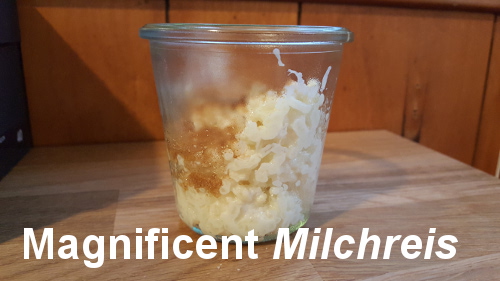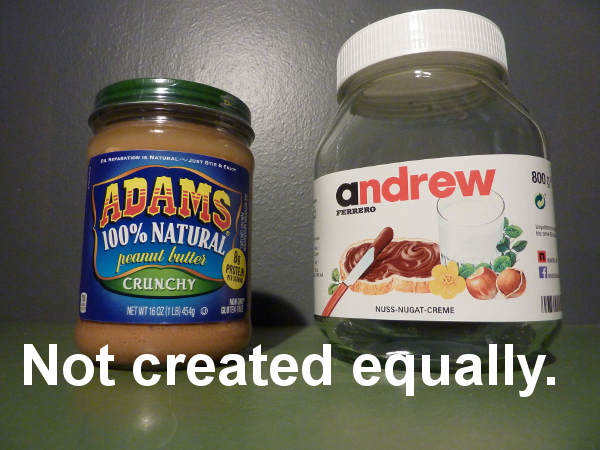Yet another thing I found magical about Germany (and still do) is the Brötchen, which many falsely translate as a bread roll. A bread roll is something that accompanies mediocre Midwestern meals and is made only marginally better through the introduction of butter. Meanwhile a Brötchen is a tiny, proud loaf of bread. Don’t believe me? It’s right there in the name: Brötchen, which is the diminuitive of Brot, which is bread.
When I was an exchange student, the baker delivered a tidy paper bag of Brötchen to my host parents’ stoop early every morning for breakfast, six days a week (we had to rely on frozen Brötchen on Sundays). As an adult in Germany, I enjoy hunting and gathering them on weekends and, as a father, it’s a tradition I’m happily handing down to my German-American kids. Who am I kidding? It’s in their Brot-loving genes!
Brötchen come in various flavors and sizes in every corner of Germany and even have differing names — Brötchen in mainland Germany, a Schrippe here in Berlin and a Semmel down in the southern parts where they speak cartoon German. While most humans are comprised primarily of water, the average German is 40 percent Brötchen with the remaining 60 percent a mixture of Bratwurst, lager beer, white asparagus and Goethe (or, sometimes, Hegel).
And today I present you: Things Germans put on them. Admittedly, some of these concoctions are not readily available at the neighborhood Imbiss (snack bar) and others may or may not be region- (or age-) specific, but they are definitely things more than one German has told me they bought somewhere, sometime, and loved. Many had tears in their eyes. We made most of these in our kitchen on Saturday and it was, as the Germans say, as fun as a bag of Brötchen (they don’t actually say that).
French fries
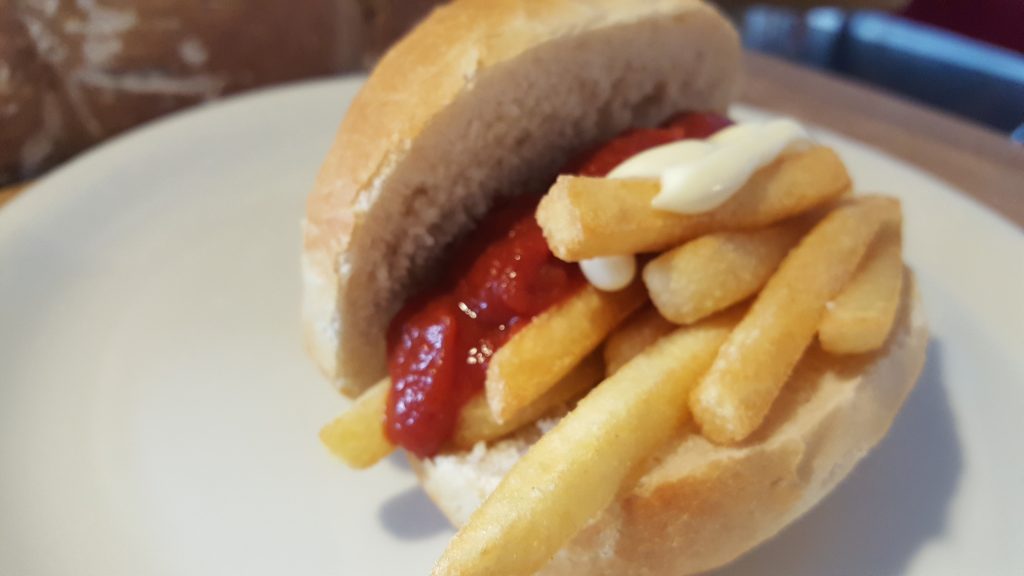
Formally this is a Hippie Brötchen, but what makes it so hippie dippie I have no idea. The idea is understandable though as I used to love crushed up potato chips on my sandwiches. But mostly I think the idea was to create a holder for the fries since these seem to be popular at public swimming pools. The Brötchen can much better withstand a wet, chloriney hand than, say, the traditional paper bag fries come in. The Hippie Brötchen looks good. It tasted even better. Ketchup and mayo, of course (rot weiss, for those in the know!).
Raw pork
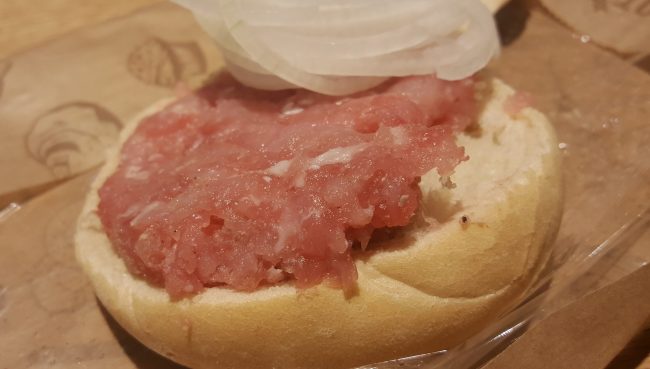
Well, not just raw pork but seasoned raw pork with onions, salt and pepper. This has various names but usually a Mettbrötchen, because of the kind of meat. My German in-laws call it a “gehacktes Brötchen“, because the meat is all hacked up, basically. And they love them. German sushi, I guess. I’ve not had many of these and I bought this GEHACKTES BRÖTCHEN at a supermarket in Potsdamer Platz for this post and I only finished about half of it. I like steak tartare. I didn’t like this.
Straight-up chocolate

My wife and I have a battle that occasionally flares up about whether Nutella and peanut butter are for dessert or meals (Nutella is clearly a dessert food, I contend). She’s made some sound arguments but sometimes Germans just throw the boundary between dessert and meal out the window and flat-out put chocolate on their Brötchen. And, as I learned, don’t look for this chocolate in the chocolate aisle, it’s right there in the breakfast spreads aisle next to peanut butter and above Nutella. As you can see, my son couldn’t wait for me to take a picture before digging in. The small, chocolate sheets are known as Eszet, which is a play on the ß letter (aka: Esszet) but is actually an abbreviation of its two inventors … yes, it took two Germans to come up with this idea.
Deep-frying oil

To get the oil on this Brötchen, you first need to get the Brötchen in the deep fryer. Really. These are generally called “Gammler” or, if you’re in Düsseldorf, a “Fortuna” and it’s just a deep-fried Brötchen. “Gammler” means “bum” so I guess it’s the cheap thing you get at the snack bar when the dust bowl has you down on your luck but I don’t see what’s so slummy about it — it was pretty tasty, and would be even tastier if it were fried in a gross-ish snack bar deep fryer that had already fried everything known to man and retained some of the flavor. Like a bar mat shot but with frying oil.
Chocolate-covered marshmallow fluff
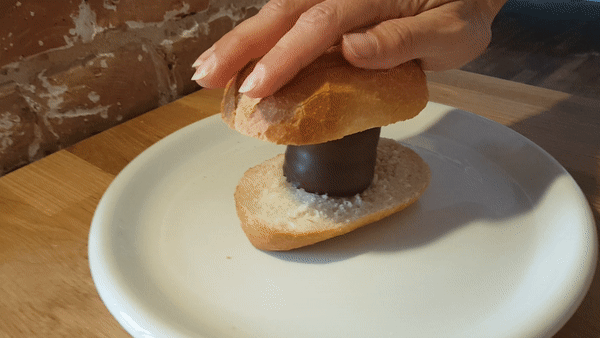
Yes, I know what Schaumküsse (foam kisses — the chocolate thing getting smushed in the gif) used to be called, can we move on? That’s my wife hand-crafting this heirloom Ditschbrötchen and when I tasted and said it wasn’t that great she said: “Imagine being hungry on the schoolyard and with it coming fresh from the baker’s car.” I still don’t think it would taste good but I get her point.
Anything else I missed that Germans put on their Brötchen?
8 Comments